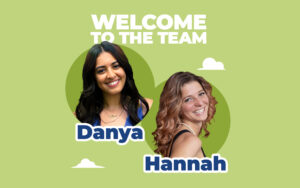It can be hard finding the right person to fit an open position, especially if your past company hires weren’t successes. The hiring process is a large internal investment in time. It takes, on average, 43 days to hire a new employee, according to recruiting software company Workable. With a competitive pool of professionals searching for jobs, it can be difficult to differentiate who will be the best option for your company.
One of the most common mistakes is ranking a resume (a piece of paper) above the actual person. More often than not, the person is not adequate for your company culture. To avoid this, here are 5 Easy Tips to hiring the right person from HR expert, Sarah Cooney.
1. Look for a Match
Yes, hiring the resume over the person is the wrong way to go. However, the right person will be a fit for the company AND the position. There are plenty of individuals with great resumes, and now with technology, it’s easy to filter out the ones that won’t fit. Again, do not stop when you think you find someone with better qualifications than the other candidates. A resume is not the only criteria that
Sarah Cooney, who has over ten years’ experience in hiring, once believed that a resume was the most important criteria. “Early on, I would be so impressed by someone’s resume; that I would focus solely on their credentials and wouldn’t give the cultural fit its proper importance. More times than not when just focusing on an impressive resume, it ended up not being a successful hire. When the components don’t match what you as a company stand for and the person you hired, you find yourself spinning your wheels trying to make a square peg fit into a round hole.”
2. Call First
A preliminary phone call should not be conducted like an interview. The call is to help get to know the candidate and for them to get to know your company. It eliminates the added pressure of answering
3. Find a Connection
Hiring someone is a lot like dating, you need to find a connection before you agree to a second date. In this instance, finding a connection over the preliminary phone call is a great start. O
Part of a great first impression, according to Cooney, is when a candidate does their homework on your company or industry. “Nothing impresses me more than when a candidate can tell me what we do as a company instead of me having to explain it, even if it isn’t 100% spot on. I thoroughly appreciate the effort and always take note of their diligence. Some industries can be confusing- especially in tech, but showing that you have done some homework really does go a long way. Come to the table with ideas during an interview. I LOVE seeing initiative in candidates.” If a candidate doesn’t have the inclination to research before their interview, are they the right fit for your company?
4. Decision Time: Qualifications or Likeability
Making a decision could be the hardest part of the interview process: who to choose? When trying to choose between two or more candidates, always go with your gut. Qualifications aside, the likability of a candidate and their ability to ease in with others takes precedence over all else.
Cooney’s experience with her intern program confirmed that hiring the person with the better personality fit than the qualifications works. “All of the candidates I meet are highly qualified, so tuning into how they will fit with our company culture becomes the key determining factor. I have had some really hard decisions when it comes down to the final two. I have definitely had instances where the final hire really came down to the person that has the best personality fit for our culture even if the other option looked like the better fit “on paper” because I knew the one that fit in with our culture would be a successful internship for them, as well as us.”
5. Are They All Talk and No Show?
Finding the right candidate does not stop after the interview process is over. The process continues into their first couple of months at your company to ensure that they were the right choice. Individuals can look great on paper and talk a big game in person, but still not live up to expectations. “I have had candidates that looked fantastic on paper- they had all the right qualifications and experience needed; but after we brought them on and took them through our orientation and onboarding program, it was very evident it just wasn’t a good fit….and then came the hard conversations.”
In addition to the hiring process, onboarding is also an important part of the journey for both employees and the employer. Cooney trusts in her onboarding program because
Interviewing and hiring can be a difficult process. But, following these 5 Easy Tips for Hiring the Person, Not the Position bring some clarity to the process.
About Level365: Level365 offers a complete Unified Communications as a Service (UCaaS) solution with enterprise voice that is customized and scalable for your business. Our service seamlessly integrates communication among desk phones, computers, and mobile devices to support remote teams and provide flexibility for onsite staff. The UC platform extends beyond voice communications with Unified Messaging, Analytics, Presence, Chat/SMS, Cloud Faxing, CRM Integrations, and more.





